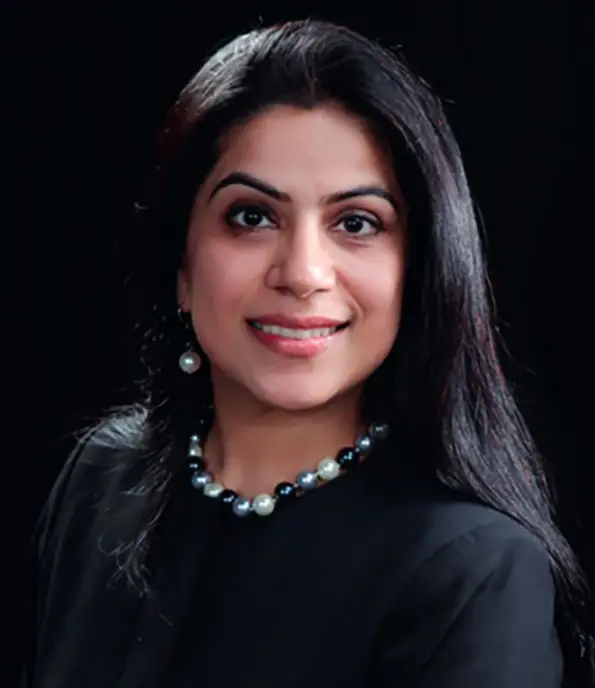
Celebrating her long association with TRS, Dr. Anjali speaks about her journey here.
The fine balance she has found between a dynamic professional career and a happy family life, the adrenaline rush of emergency radiology, and a few pointers for budding female rads intending to tread her path.
In 2003 you were the first ABR to return from the US and join Dr Kalyanpur at Teleradiology Solutions. Tell us about how you made that decision and how you feel about it today.
I wanted to get a wider perspective and more global exposure during training, which led me to do a residency in radiology in the United States. However, the long term goal was to return to India and be close to family and at home. A chance meeting with Dr Kalyanpur at the RSNA of 2002 just gave me a great opportunity to return and engage in a novel way of radiology back in 2003. It’s been 19 years and I have no regrets, as I have had numerous opportunities, like I would have in a regular radiology department, to grow as a professional.
You are an active researcher and have published several papers on Quality in reporting and more recently on Artificial Intelligence in Radiology. What do you see as being the most exciting aspect of AI in Teleradiology?
AI will transform teleradiology in a few years, we are already seeing changes, in terms of usage of these tools in predicting surges, workload optimization, lesion detection and quantification and quality assurance. Teleradiology, by nature of its entirely cloud enabled digital workflow, is best suited to incorporate various AI tools and use them to triage effectively and improve radiologist efficiency. Our roles are set to change with an even greater stress on synthesis of all available findings and reaching a relevant conclusion to solve the clinical problem at hand.
You have always been greatly focused on academics and are a Founder and General Secretary of the Society of Emergency Radiology. You have been on the refresher course faculty of the RSNA and have conducted numerous webinars with the SER on TRS’s Radguru portal and at other fora. What drives you towards Academics and how do you view the importance of your role as an educator in the field of Emergency Radiology?
Academic pursuits enrich the important, but routine work I do and pushes me to clarify my concepts and dig deeper. Dr Kalyanpur, the group in general, and my family are focused on academics and quality, so this provides an excellent environment for my pursuits in this direction. To improve Emergency Radiology training in India, we needed a professional forum to promote training in the field and formulate a group of like-minded radiologists with special interest in emergency radiology. This led to the birth of SER and our engagement with international societies. The role of educator has been a by-product of this effort.
While having an active professional life and career you have raised two exceptional children and are a devoted and supportive wife, mother and daughter. How has Teleradiology helped you in achieving work-family-life balance?
Teleradiology made it easier by saving me the commute time on a routine basis. While the children were younger, they knew that I was around. Though, I was busy in a high intensity emergency radiology routine during my clinical duty hours, my family members could get my attention for an urgent task and I had the satisfaction of giving my best to both professional and personal commitments.
What do you like the most about your work in Emergency Teleradiology? What is your message to young women radiologists aspiring to a career in Teleradiology?
Emergency radiology is a high adrenaline subspecialty with patients presenting with critical or life threatening conditions. Practicing it in a teleradiology format makes it more organized, and the distance takes a bit of the heat off in the communication with stressed out referring doctors. This lets one make better judgments and ultimately better care, which is appreciated by the colleagues at the other end.
There are many directions that one can take in any practice, and such is also true for teleradiology. You can choose to do your clinical duties and log out after your call, or stretch yourself and get active with teaching on a virtual platform that has a much wider reach than any F2F teaching, get involved with operations, workflow improvements, software development or AI tool validation. There is no dearth of opportunities. The choice is yours to make.

Dr. Anjali Agrawal
Dr. Anjali Agrawal is a Senior Consultant Radiologist at Teleradiology Solutions, where she heads the Delhi operations of the group. She graduated in medicine from the All India Institute of Medical Sciences, New Delhi, followed by radiology postgraduate training at AIIMS and subsequently the Baylor College of Medicine, Houston, Texas. She is an American Board Certified radiologist and is actively involved with the American Society of Emergency Radiology, European Society of Emergency radiology and the Radiological Society of North America. She is a founder member of the Society for Emergency Radiology in India, of which she is currently the General Secretary. She has also been awarded the honor of Fellow of the American Society of Emergency Radiology (FASER).
Apart from being an outstanding clinician, Dr. Anjali is a highly regarded researcher as well as an eminent speaker in various radiology conferences. She has delivered more than 100 presentations in radiology and served on the refresher course faculty of the RSNA. She has spoken at several international webinars and conferences on the subject of Artificial Intelligence in Imaging.
Dr Anjali is associated with TRS since 2003. Her impeccable journey with TRS is a curve of growth and learning professionally and personally. In a short interview, she has shared some very interesting points which are very informative for an upcoming radiologist on how to balance work and personal life.
